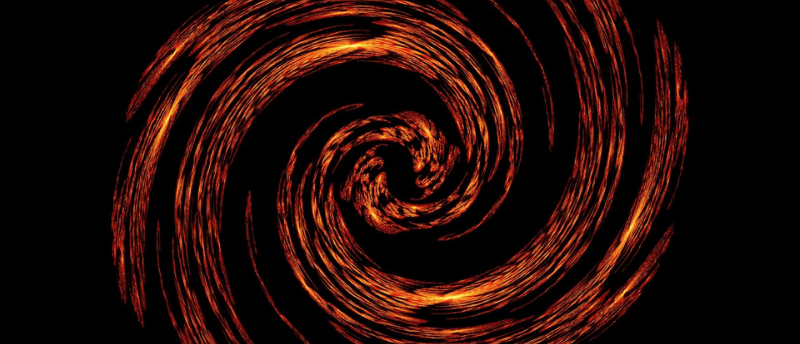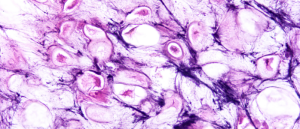You spin me right round: groups of malaria parasites form vortices

Researchers used computer simulations to identify the mechanisms behind the rotating vortices formed by groups of Plasmodium, malaria-causing parasites.
A collaboration between two research groups at Heidelberg University (Germany), led by Ulrich Schwarz and Friedrich Frischknecht, observed that collections of malaria-causing parasites form vortices that are similar to the collective movement exhibited by fish and found elsewhere in nature.
Collective movement is common amongst biological organisms, for example, insects that move in swarms, and at a cellular level, like bacteria in biofilms. Emergent behaviors can arise when many individuals collaborate, with new characteristics that wouldn’t otherwise be present. “In physics, collectivity creates such important processes as phase transitions, superconductivity, and magnetic properties,” explains Schwarz.
Malaria is caused by single-celled parasites called Plasmodium, of which there are five species. Plasmodium act as a single cell throughout most of the stages of malaria infection, hence the collective properties of the parasite are rarely studied. Additionally, parasites collect in the salivary glands in mosquitos, where there is limited space for movement, so the researchers aimed to develop an appropriate method of study where the parasites could be observed moving freely.
When the parasite is in the salivary gland it has a long and curved shape known as a sporozoite. “As soon as sporozoites are injected into the skin by the mosquito, individual parasites begin to quickly move toward the blood vessels. This is the critical phase of the infection because it is successful only if a pathogen reaches the bloodstream,” explains Frischknecht.
 Frozen tissues and Tabula Sapiens: the latest studies from the Human Cell Atlas
Frozen tissues and Tabula Sapiens: the latest studies from the Human Cell Atlas
The Human Cell Atlas makes further progress toward mapping every human cell type and recently published papers focused on multi-tissue cell analysis.
The researchers’ novel method of study involved dissecting the salivary gland from mosquitos and pressing them between two glass plates. The oscillations observed could be an emergent characteristic since this is only possible as a collective of moving cells and grows stronger in larger vortices. Unlike the movements of bacteria or fish, these parasites always rotate in the same direction forming a vortex system with a chiral character, as well as, surprisingly, fluctuations in size.
The vortexes were then quantitatively studied by tracking individual parasites rotating. The researchers could record both the speed and curvature of their movements. Using an agent-based computer simulation (one that simulates the actions and interaction of individual entities to understand the behavior of a system), it was possible to precisely identify the physical principles that explain all the aspects that were observed during the experiment. The interaction of active movement, curved shape of the cells, chirality, and mechanical flexibility were able to explain the sorting and oscillation of the vortices.
The oscillations occurred because the movement of individual pathogens is converted to elastic energy, which can then be stored in the vortex. “Our new model system offers the opportunity to better understand the physics of collectives with elastic properties and perhaps render them usable for technical applications in the future,” said Schwarz.
Initial computer simulations have shown that right- and left-turning parasites segregate to create two different vortex systems. Next, the researchers hope to understand the cause of this chiral movement, which could be due to the structure of sporozoites. This may potentially open new ways to disrupt sporozoite movement at the onset of malaria infection.
“In any event, our study has shown that the mechanics of the pathogens play an extremely important and heretofore overlooked role – a finding that also opens up new perspectives for medical interventions,” said Frischknecht.